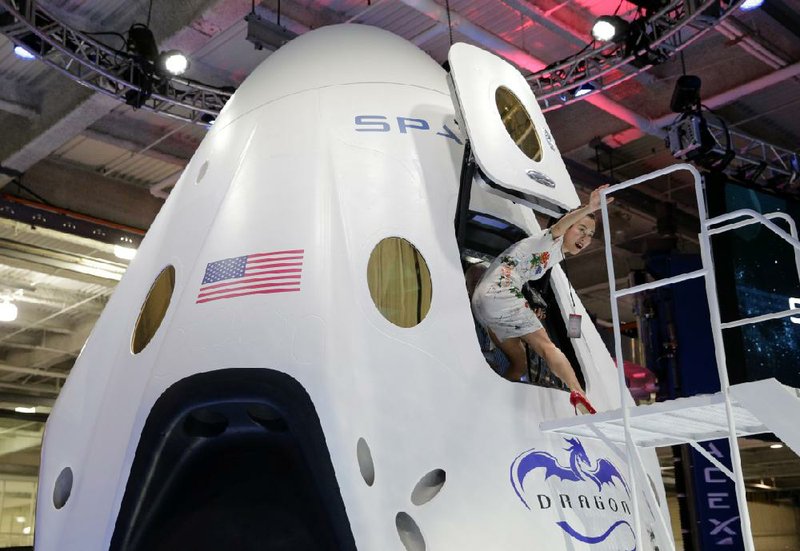Elon Musk's Space Exploration Technologies Corp., the first private rocket-maker to deliver cargo to the International Space Station, said its reusable capsule will be ready to take astronauts there within two years.
The closely held company's Dragon V2 spaceship can carry as many as seven people and as much as 4 tons of cargo, Musk said late Thursday at the SpaceX factory and headquarters in Hawthorne, Calif. It's also being designed with legs and re-entry engines to let it land anywhere back on Earth, he said.
"We actually expect to be able to transport crew by 2016, a year before NASA needs it," said Musk, a 42-year-old billionaire who also leads electric-car-maker Tesla Motors Inc. "We feel fairly confident we'll be ready."
Musk disclosed his ambition as he attempts to expand SpaceX's business with the U.S. beyond NASA missions and get a piece of the $67.6 billion Defense Department budget for satellite launches. SpaceX sued the Air Force last month, accusing the service of creating an illegal monopoly for that business.
United Launch Alliance, a joint venture of Bethesda, Md.-based Lockheed Martin Corp. and Chicago-based Boeing Co., has a lock on the satellite launches.
Since the retirement of the National Aeronautics and Space Administration's space shuttle fleet, Russia's Soyuz rockets have been the only way to get astronauts into space. Russia charges as much as $76 million per mission. SpaceX intends to be able to deliver passengers for less than $20 million, Musk said.
"It's not only that the Russians are taunting us. They are massively overcharging," he said.
The new SpaceX capsule, with an interior inspired by Musk's love for science fiction, includes a sleek control console with four oversize, flat touch screens that fold into place over the top row of seats. The screens are adapted from those used in Tesla's Model S, Musk said.
The Dragon V2 is intended to be used for as many as 10 missions before its protective heatshield needs to be refurbished, Musk said.
SpaceX is one of four companies receiving NASA funding to develop rockets and capsules to take astronauts to and from the International Space Station. The others are Boeing, Jeff Bezos' Blue Origin LLC and Sierra Nevada Corp.
SpaceX has received more than $2.5 billion in NASA funding since 2008 for commercial crew and other ventures, including cargo supply flights to the space station, according to agency figures.
The company won $440 million from NASA in August 2012 to develop a version of the Dragon capsule to carry passengers. Development costs for the company's first capsule and the futuristic V2 version displayed Thursday will run to as much as $1 billion to get NASA certification, Musk said.
Tests by the U.S. space agency to certify the V2 for astronaut missions begin this year, SpaceX said.
The California company sent its first Dragon craft to the International Space Station in May 2012 and its latest cargo mission was completed May 18, when a Dragon capsule returned to Earth carrying 3,500 pounds of cargo and scientific samples.
Separately, SpaceX's plan to build a rocket launch facility near Brownsville, Texas, for commercial missions carrying satellites to space is advancing as it passed a Federal Aviation Administration regulatory review.
The proposal is "consistent with existing national environmental policies and objectives," the U.S. agency said in a report.
Musk said Thursday that he was pleased by the decision and that while the facility isn't intended for space station missions, it could potentially be used for them if necessary.
The proposed site is at Boca Chica Beach, east of Brownsville in the southernmost tip of Texas. The site is attractive because it is isolated, as close to the equator as it's possible to get in Texas and next to the Gulf of Mexico -- factors that ease the way for launches.
Information for this article was contributed by Jonathan D. Salant and Darrell Preston of Bloomberg News.
Business on 05/31/2014
